New Year, Same Bullet Journal
A quick note: this post was mostly written in early 2020. I never had the chance to post it then, between personal struggles and the start of the covid19 pandemic. But the information is good, and I want it to live here for those who are debating continuing in the same journal or starting a new one.
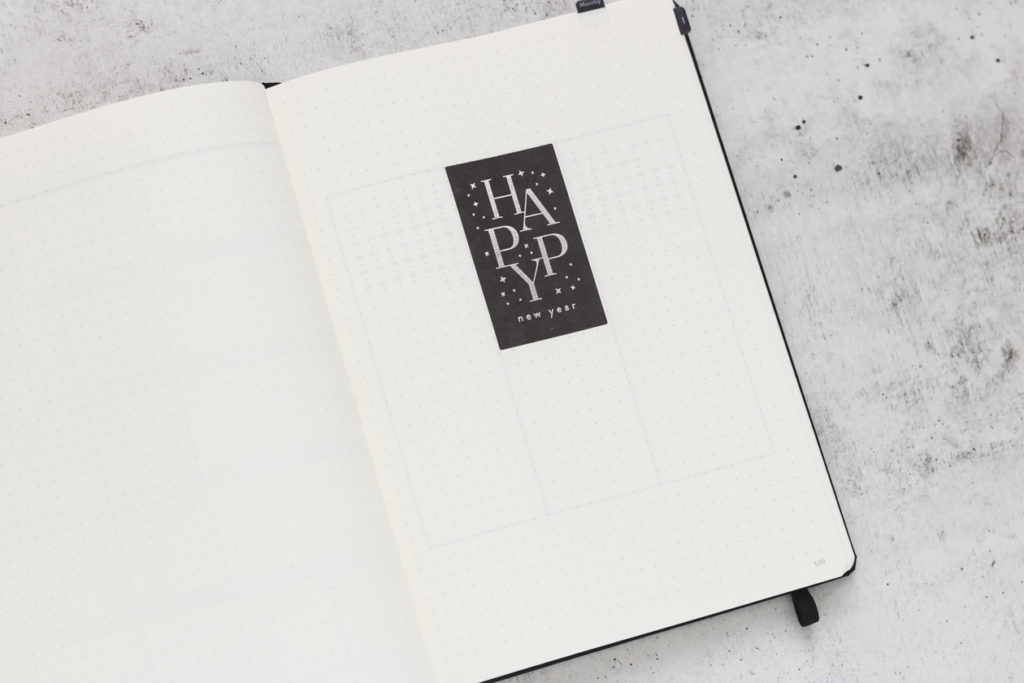
As the new year started I had to make a decision: do I start a new bullet journal or continue in my 2019 notebook? Ultimately, I decided sticking with the same bullet journal was the right choice for me. But there were many factors I considered when making that choice. I’d like to share my process on this decision to help others (and future me) decide if a new year means a new bullet journal or not.
Decision Factors
pages remaining
Using the same notebook for a new year of bullet journaling is a decision that, for me, took much thought. The number one deciding factor, though: do I have enough room? It is imperative to look at how many pages you have left and make your determination based on that number.
In my 2019 Bullet Journal Recap I summarized how I used 108 pages of my Leuchtturm1917 notebook, leaving me with 140 pages for 2020. Even though 140 pages is many pages more than I used in 2019, the last year of the twenty-teens was my lightest year of bullet journaling since starting in 2016. I needed to investigate further to know if 140 pages would really be enough.
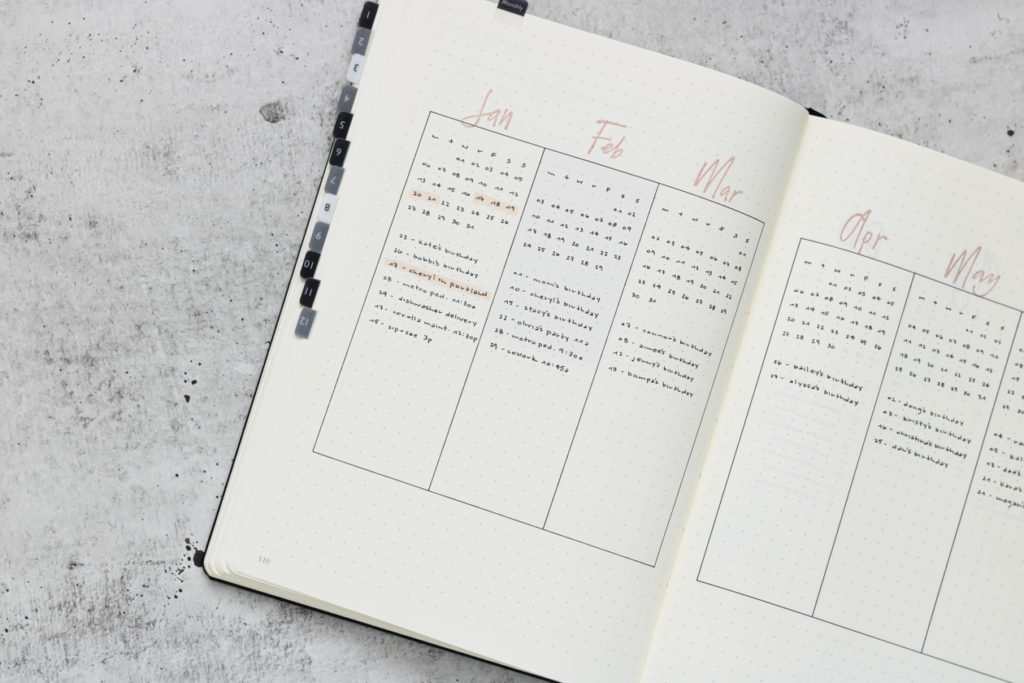
previous years
I collected together all my old bullet journals and took a look at how much of each notebook I utilized. It was easy to compare, because I’ve used the same notebook every year.
| year | pages used | yearly pages | blank pages |
|---|---|---|---|
| 2016 | 160 | 20 | |
| 2017 | 181 | 34 | |
| 2018 | 165 | 16 | |
| 2019 | 108 | 15 | 40 |
The most pages I used in a single notebook was 181. While 2016 was a partial year at 160 pages, I probably wouldn’t have gotten much past the upper limit of 181 had I started in January instead of March.
Would 140 pages suffice for 2020? Looking solely at the numbers listed above, it wouldn’t seem likely. But I had two key things I wanted to streamline in my 2020 bullet journal, and I needed to take these into account.
First, my big takeaway from my 2019 recap was to waste less pages by skipping over unused pages. I left 40 pages blank in 2019, and though I didn’t go back to count the wasted space in my older journals, I knew this was a trend for me.
Second, I wanted to reduce the number of yearly pages I used, including those for future logs, lists, and trackers. I’d already made big reductions between my first two years and the most recent two, but I still didn’t utilize them as much as I could have. 2020 would only have the pages I really used every year.
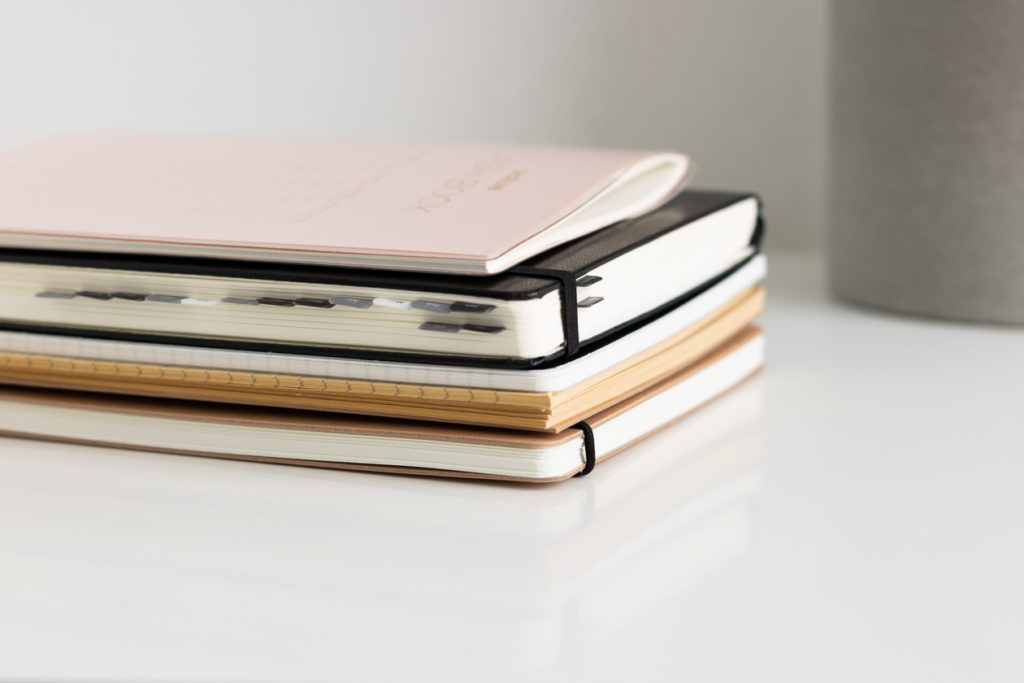
dividing resources
Page count aside, I also kept in mind that my bullet journal wasn’t really confined to a single notebook. Over time, I’ve added to my stack of notebooks in active use. I have notebooks for free-writing, keeping track of Plan Another Day, and home improvement ideas.
Because these notebooks capture things that would otherwise end up in my bullet journal, there are fewer needs my total page count would be required to support. By having other places to migrate things to, there would be less pressure to make everything fit.
Taking all things into account, I felt I could confidently decide that staying in my current notebook instead of starting a brand new bullet journal was the right decision. 140 pages, with a reduced set of yearly trackers, a focus on less wasted space, and support from additional notebooks, should be sufficient for 2020.
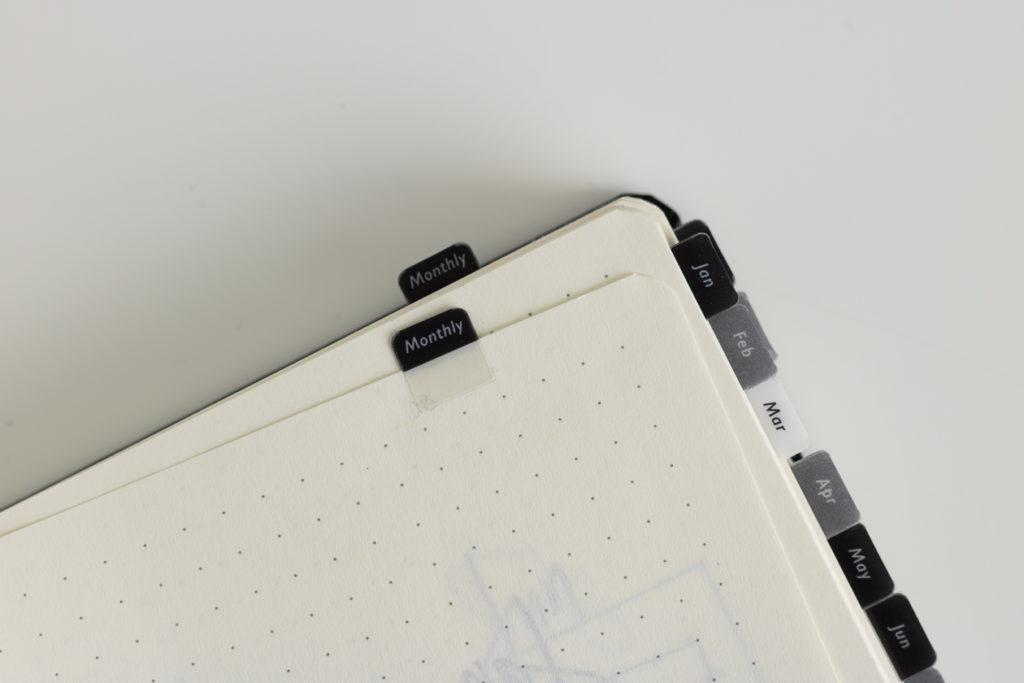
Defining a New Start
physical markers
Having made the decision to stay in the same bullet journal for 2020, I now had to plan out the transition into a new year. I wanted to make sure I could easily get to the newly relevant pages, as most of 2019 would no longer need to be regularly referenced.
I’ve used monthly tabs as physical markers for each month since my first bullet journal. But I’ve never had to divide between two separate years before. Luckily, in 2019 I switched from the calendar tabs I’d used in previous journals to a smaller set of tabs that weren’t tied to a specific year. Since I had an additional set, it was easy to stick with the same look for both years.
But marking the months wasn’t the only division I wanted to easily identify. How would I get to my new future log without having to flip through the pages between my December 2019 monthly and my January 2020 one?
The tab set had three tabs I didn’t utilize that said: Monthly, Weekly, Daily. The monthly tabs would be a great option to easily get to my Future Log. I ended up adding two tabs, one to my 2020 future log and one retroactively to my 2019 one. I wanted to keep things consistent. They are lined up at the top edge of my notebook to separate them from the monthly tabs on the side.
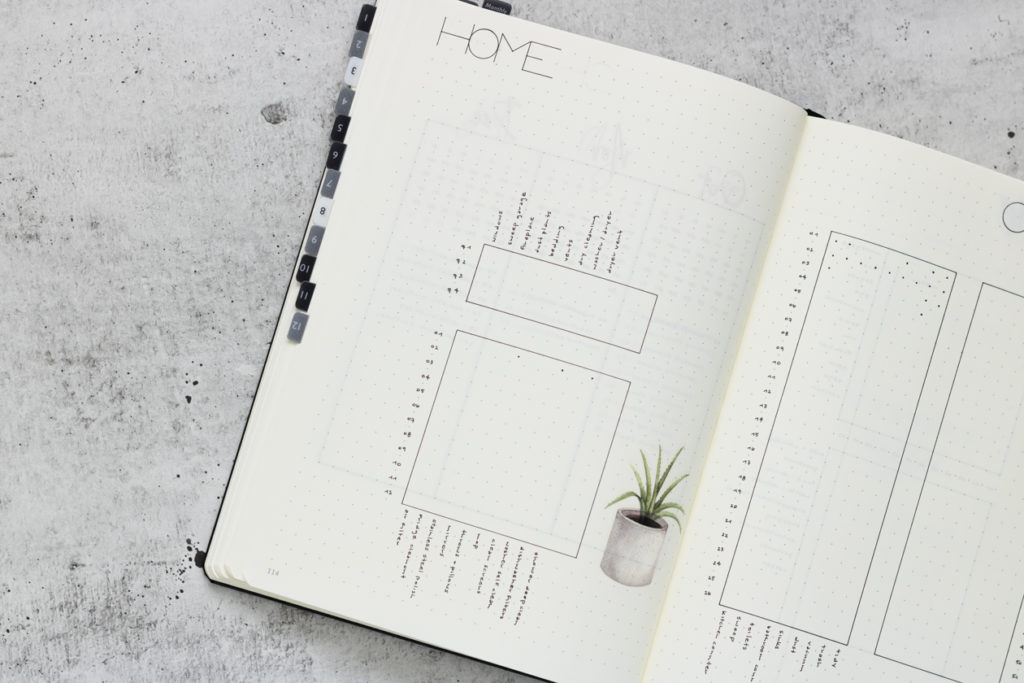
consistent style
Even though a new year would provide the opportunity to make changes to my style, I didn’t feel I needed to make a big change for 2020. Every time I try to add to or change my style on purpose, I end up reverting back to what I know and like. I’ve learned this lesson several times over the years of bullet journaling.
The best thing, I’ve found, is to let style evolve naturally as your taste evolves. The start of a new year isn’t going to change my design aesthetic dramatically, because I’ve been adjusting all along the way in my previous journal.
2020 Pages






Arguments Against
I’ve given a lot of reasons as to why I decided to stay in the same journal for 2020 instead of starting a new one. But what would have made me move to a new notebook instead?
The biggest reason: not enough pages. I did a lot of work deciding if I’d have enough room for an entire new year. Had I felt my remaining pages in my current notebook wouldn’t be enough, I would have started fresh.
If I wanted to drastically change my format, style, or supplies, it would make sense to make a change. Because I’ve found a rhythm that works for me and my bullet journal, I didn’t see an issue with sticking to what I’ve been doing. Had I wanted to experiment with a different style or size of notebook, change the monthly tabs I’ve used, or made big structural changes to how I use my notebook, I would have started fresh.
Major life changes would have been a deciding factor as well. Going back to school, starting a new job, having a baby would all be things that would make me think twice. While I don’t anticipate any major life changes in 2020, had I been planning a big change, I would have started fresh.
Summary
Sticking with the same bullet journal for 2020 wasn’t a light decision for me. I put a great deal of thought into it and ultimately feel very confident in not needing a new bullet journal this year. I’m excited to continue my journaling journey mindfully and with less waste.
- Deciding Factors
- pages remaining
- past bullet journal statistics
- additional notebooks for individual projects
- fewer yearly pages for 2020
- goal to waste fewer pages
- continued use of same supplies
- consistent style moving forward
- 2020 Pages
- landing page
- future log
- chores tracker
- quarterly + monthly
- weekly
- bills + budget tracker
- reading list
- long-term shopping list
Do you start the year with a fresh bullet journal? Or do you fill every page before moving on to a new notebook?
